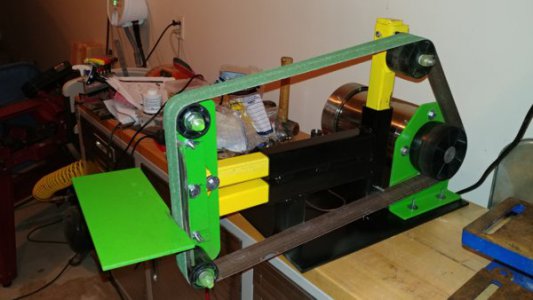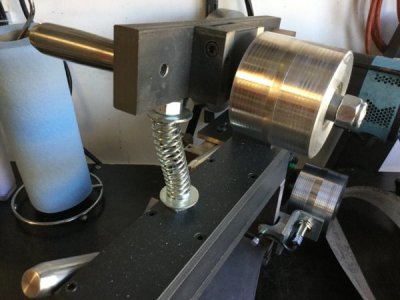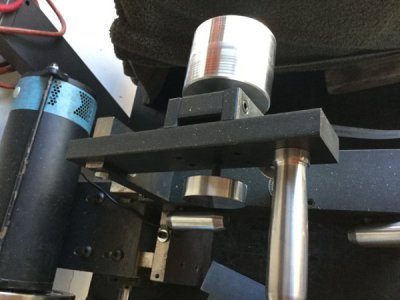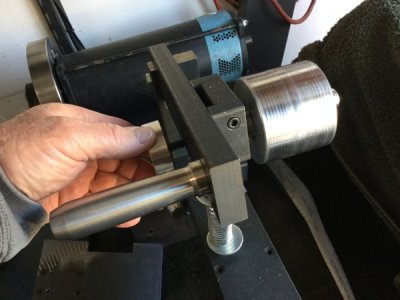Well, I also blame Mikey for my belt grinder build. 
I built one of these.
http://dcknives.blogspot.com/p/2-x-72-belt-grinder.html
http://dcknives.blogspot.com/p/bg272-adjustable-tool-rest.html?m=1
You can get the parts cheaply if you shop for a while. A free treadmill can supply the motor, or you can get a 3 phase and use a VFD for speed control. If you have a lathe, wheels are easy enough to make, the glass-filled nylon ones I got were $70 on ebay from Oregon Blade Maker.
Using a ceramic 36 grit belt at about 5000 sfpm, 3/8" keystock takes about 5 seconds to grind a largish flat. Think the one from Mikey's threading tools. The grind area gets hot, but the bit itself, cut about 4" long, doesn't get bad. The grinder does not appear to notice I'm grinding on it. Just keeps humming away. I picked up a pack of a few different grit belts to put a better finish on them. The 36 grit is pretty rough, as you would expect. I haven't tried HSS yet. I need a face shield.
Motor is a Marathon N437. 1750 RPM, 3 phase 220V, 2HP. Run from a VFD. I had it at 100Hz for the test above. I was going to use a treadmill, but lucked into someone selling NOS motors.

I built one of these.
http://dcknives.blogspot.com/p/2-x-72-belt-grinder.html
http://dcknives.blogspot.com/p/bg272-adjustable-tool-rest.html?m=1
You can get the parts cheaply if you shop for a while. A free treadmill can supply the motor, or you can get a 3 phase and use a VFD for speed control. If you have a lathe, wheels are easy enough to make, the glass-filled nylon ones I got were $70 on ebay from Oregon Blade Maker.
Using a ceramic 36 grit belt at about 5000 sfpm, 3/8" keystock takes about 5 seconds to grind a largish flat. Think the one from Mikey's threading tools. The grind area gets hot, but the bit itself, cut about 4" long, doesn't get bad. The grinder does not appear to notice I'm grinding on it. Just keeps humming away. I picked up a pack of a few different grit belts to put a better finish on them. The 36 grit is pretty rough, as you would expect. I haven't tried HSS yet. I need a face shield.
Motor is a Marathon N437. 1750 RPM, 3 phase 220V, 2HP. Run from a VFD. I had it at 100Hz for the test above. I was going to use a treadmill, but lucked into someone selling NOS motors.





